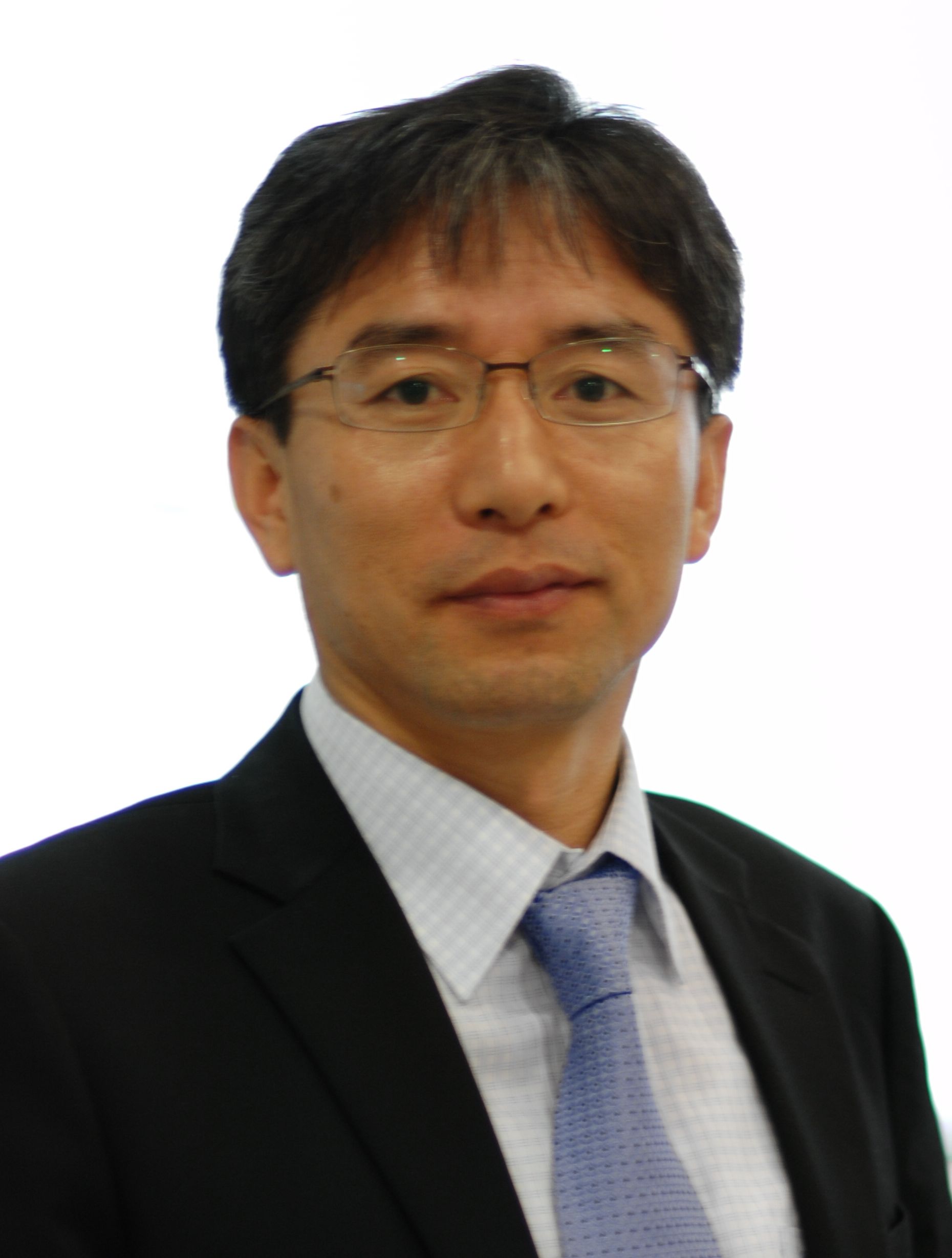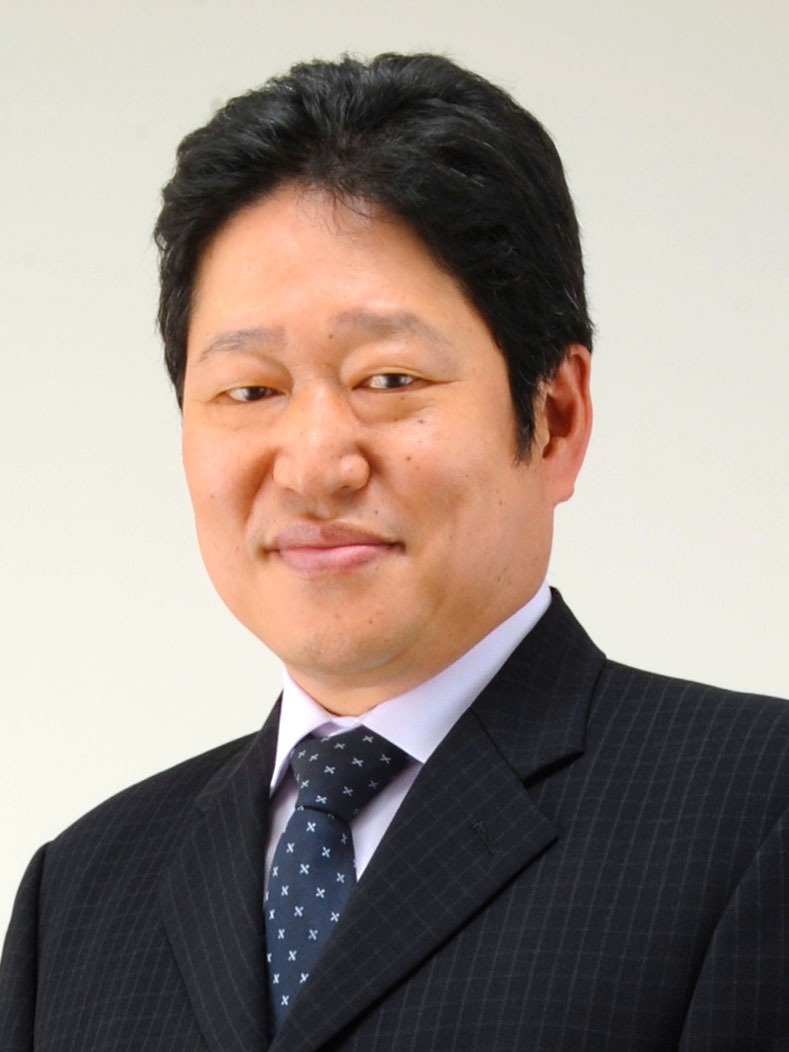Plenary Talks
Design of Simple Structured Fuzzy Logic Control Systems and Their Applications
Prof. Byung-Jae Choi
School of Electronic Engineering, Daegu University, KoreaSince the fuzzy logic was first introduced by Lotfi A. Zadeh and its application to automatic control areas had been addressed by E. H. Mamdani, the fuzzy logic controller (FLC) has emerged as an active and fruitful system in the application of fuzzy set theory. In general, the FLC is suitable for many nontraditionally modelled industrial processes such as linguistically controlled devices and systems.
In spite of its many advantages, the FLC has a few considerations: It has many tuning parameters as follows: 1) Tuning of rules, 2) Tuning of membership functions, and 3) Tuning of scaling factors. They are closely related to the number of input variables of the FLC.
In most cases, FLCs use only the error and the change-of-error as fuzzy input variables regardless of the complexity of the controlled processes. Such conventional FLCs are frequently suitable for simple second order plants. Many cases for complex higher order processes may require some more input variables. Then the FLC requires a huge number of control rules and tuning parameters. And it makes difficult to establish fine rules for the good control performance.
A two-dimensional type rule table which uses only the error and the change-of-error as fuzzy input variables represents some properties: Zero control actions are placed at the neighborhood of its diagonal band, and their negative and positive control ones are exerted above and below the band, respectively. Furthermore the absolute magnitude of control actions is strengthened to proportional to the distance from its main diagonal line on the normalized space. These properties are satisfied in all cases that use the error and its time derivative terms as fuzzy input variables in the controlled processes with the minimum phase property. From these properties, we can derive a new variable called a signed distance which is the distance with a sign or a direction. It is the distance between an actual operating point and a straight line called the switching line in the case of the second order systems. The switching line is changed to the switching hyperplane in the case of complex higher order systems. Here the switching functions have been composed of the error and its time derivative terms. The derived variable is used as a sole input variable for the proposed FLC called SFLC (Simple structured FLC). Then the rule table for the SFLC becomes very simple. In turn, the number of control rules and tuning parameters and the computational complexity have been greatly reduced compared to cases of conventional FLCs. Thus, generation, modification, and tuning of control rules become very easy. Furthermore, its control performances have been nearly the same as those of conventional FLCs.
In order to compare the control performances simulation examples have been performed using a few arbitrary nonlinear processes.

Biography
Prof. Byung-Jae Choi received Master and Ph.D. degrees in KAIST, Korea, in 1989 and 1998, respectively. He was a researcher of Applied Electronic Division, Korea Electric Power Research Institute, KEPCO, Korea, from 1989 to 1995. In 1999, he joined as a Professor of Department of Electronic Engineering, Daegu University, Korea. From 2002 to 2003, he was a research associate of Department of Electrical and Computer Engineering, Duke University in USA. He severed Dean of Research Affairs and Director of Industry and Academic Cooperation Foundation in Daegu University. He is a full professor and a director of Training Center for Leadership in Rehabilitation Industry in Daegu University. He is also a vice president of KIIS, Korea. He published about 130 papers and books. His research interests concern the intelligent control and systems. His main contribution is in the fuzzy logic control and its applications.
How Information Technology helps Clinical Practice ?
Prof. Yutaka Hata
Graduate School of Simulation Studies, University of Hyogo, JapanInformation technology (IT) has become the primary technology in the current medical practice and health care. A lot of medical and health care studies are done in the world. Especially, many big companies such as GE healthcare and Siemens focus heath care system rather than medical system based on cloud computing. On the other side, pure medical issues are also very active in many institutes. Especially, Japanese government promotes this trend to accelerate economic recovery.
In this talk, first I introduce an Automated Medical Bed (AMD) in near future. Computer Science/Engineering drives this scheme with IT. This bed consists of health care system, automated medical diagnosis system (AMDS), automated medical treatment system (AMTS), and automated medical treatment system (AMTS). Almost all medical engineering studies would be one of the system of AMD. In these, most difficult task would be a decision making component in AMDS. This component makes a decision whether the patient should be received clinical treatment or not. It makes decision of 5W1H; “when” is the time patient received medical treatment, “what” is the organ or function of medical treatment, “why” is the reason of the treatment, “where” is the portion or function, “how” is the treatment method, and “who” is the subject to do the treatment such as ACPS and rehabilitation.
Secondly, I describe two topics as studies of clinical practice: one is a heart failure diagnosis method as the basis of AMDS and the other is male and female infertility support system as the basis of AMDS. A heart failure diagnosis method with tagged MRI images are introduced by searching crossing points in the image. The experimental results were compared with HARP method. Then, the final goal of this system is shown. Next, I describe a male infertility support system for azoospermia patients by observing the presence or absence of sperm in a testicle by ultrasonic measurement. I show the experimental results of phantom and human. In addition, I describe a female infertility support system by observing the presence or absence of ovum by a standard ultrasonic medical devise I show the results by AI technique. Next, I show a simulation to know appropriate time of implantation. Finally, I will conclude my talk.

Biography
He received the B.E. degree (Electronics) in 1984, the M.E. degree (Electrical Engineering and Electronics) in 1986 and the Ph.D.(Doctor of Engineering) in 1989 all from Himeji Institute of Technology, Japan. He is currently a Professor in the Graduate School of Simulation Studies, University of Hyogo, Japan. He spent one year in BISC Group, University of California at Berkeley from 1995 to 1996 as a visiting scholar. His research interests are in medical imaging, Bio-signal processing, health monitoring system, fuzzy system and Immune system. He received 15 international awards such as the Franklin V. Taylor Best Paper Award (IEEE SMC 2009), World Automation Congress Lifetime Achievement Award (2008), Biomedical Wellness Award (SPIE Defense, Security, and Sensing 2010). He is editors including IEEE Trans on SMC-Systems. He is an IEEE Fellow.
The role of monotonicity in data science
Prof. Bernard De Baets
KERMIT, Ghent University, BelgiumIn many modelling problems, there exists a monotone relationship between one or more of the input variables and the output variable, although this may not always be fully the case in the observed input-output data due to data imperfections. Monotonicity is also a common property of evaluation and selection procedures. In contrast to a local property such as continuity, monotonicity is of a global nature and any violation of it is therefore simply unacceptable. We explore several problem settings where monotonicity matters, including fuzzy modelling, machine learning and decision making. Central to the above three settings is the cumulative approach, which matches nicely with the monotonicity requirement.
By far the most popular fuzzy modelling paradigm, despite its weak theoretical foundations, is the rule-based approach of Mamdani and Assilian. In numerous applied papers, authors innocently assume that given a fuzzy rule base that appears monotone at the linguistic level, this will be the case for the generated input-output mapping as well. Unfortunately, this assumption is false, and we will show how to counter it. Moreover, we will show that an implication-based interpretation, accompanied with a cumulative approach based on at-least and/or at-most quantifiers, might be a much more reasonable alternative.
Next, we deal with a particular type of classification problem, in which there exists a linear ordering on the label set (as in ordinal regression) as well as on the domain of each of the features. Moreover, there exists a monotone relationship between the features and the class labels. Such problems of monotone classification typically arise in a multi-criteria evaluation setting. When learning such a model from a data set, we are confronted with data impurity in the form of reversed preference. We present the Ordinal Stochastic Dominance Learner framework, which permits to build various instance-based algorithms able to process such data.
Finally, we explore a pairwise preference setting where each stakeholder expresses his/her preferences in the shape of a reciprocal relation that is monotone w.r.t. a linear order on the set of alternatives. The goal is to come up with an overall monotone reciprocal relation reflecting `best' the opinions. We formulate the problem as an optimization problem, where the aggregated linear order is that for which the implied stochastic monotonicity conditions are closest to being satisfied by the distribution of the input monotone reciprocal relations. Interesting links with social choice will be pointed out.

Biography
Bernard De Baets is a senior full professor in applied mathematics at the Faculty of Bioscience Engineering of Ghent University, the top-ranked Belgian university (Shanghai-rank 69). He is leading the research unit KERMIT and acts as head of the Department of Data Analysis and Mathematical Modelling. Furthermore, he is an affiliated professor at the Anton de Kom Universiteit (Suriname), an Honorary Professor of Budapest Tech (Hungary), a Doctor Honoris Causa of the University of Turku (Finland) and a Profesor Invitado of the Universidad Central “Marta Abreu” de las Villas (Cuba).
As a trained mathematician, computer scientist and knowledge engineer, Bernard has developed a passion for multi- and interdisciplinary research. He is not only deeply involved in fundamental research in three interlaced research threads, namely knowledge-based, predictive and spatio-temporal modelling, but also aims at innovative applications in the applied biological sciences. At present, over 30 researchers are involved in the activities of KERMIT. Over the past 20 years, 63 PhD students have graduated under his (co-)supervision.
Bernard is a prolific writer, with a bibliography comprising well over 450 peer-reviewed journal papers, 60 book chapters and 300 contributions to conference proceedings, accumulating over 16000 Google Scholar citations (h-index 61). Several of his works have been bestowed upon with a best paper award. Moreover, he is a much-invited speaker, having delivered over 200 lectures world-wide. In 2011, he was elected Fellow of IFSA (International Fuzzy Systems Association) and in 2012, he was a nominee for the Ghent University Prometheus Award for Research.
Bernard actively serves the research community, in particular as co-editor-in-chief of Fuzzy Sets and Systems and as member of the editorial board of several other journals, including the Internat. J. of Approximate Reasoning, Engineering Applications of Artificial Intelligence, and the Iranian J. of Fuzzy Systems. He is a member of the Administrative Board of the Belgian OR Society.



